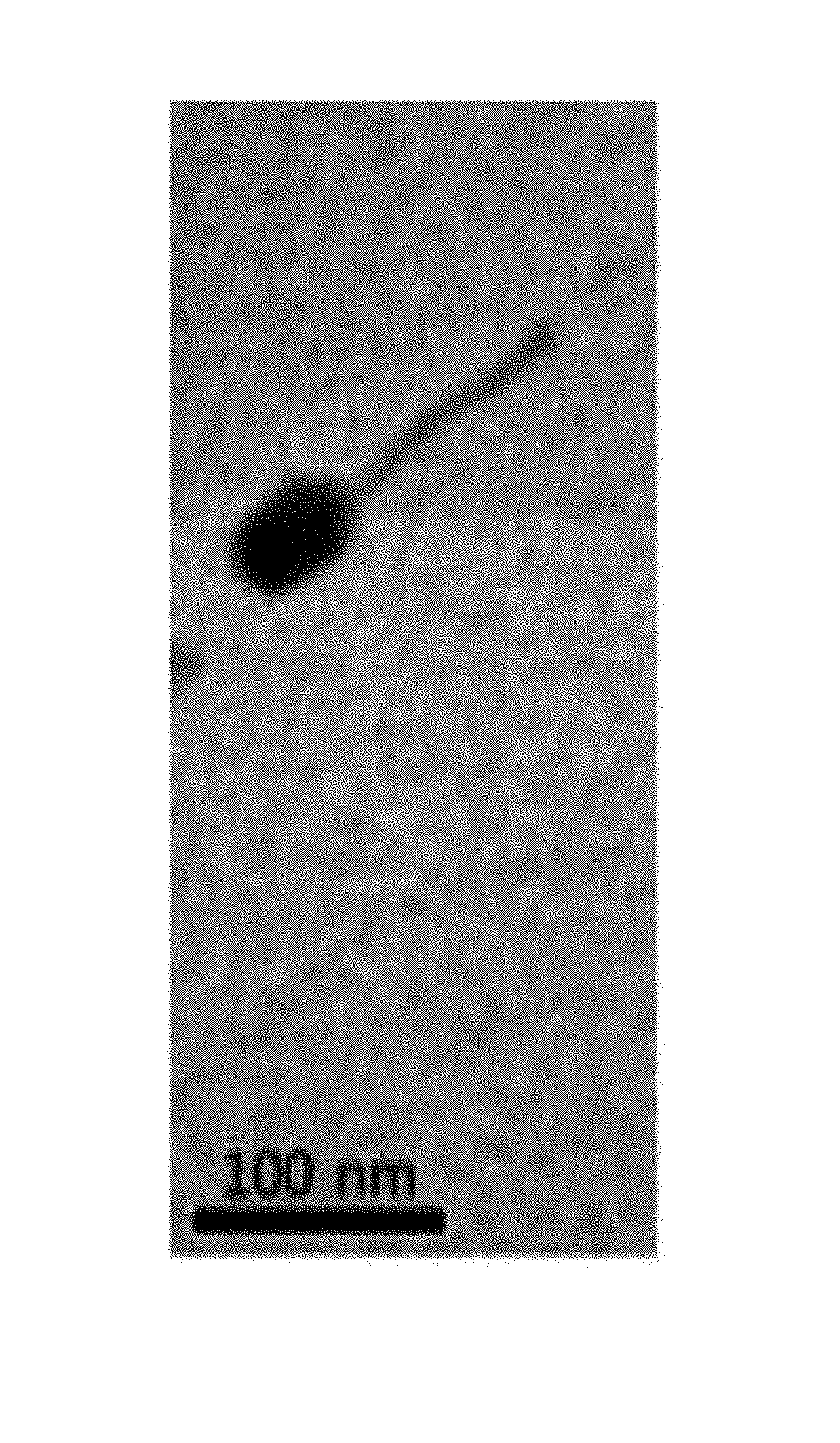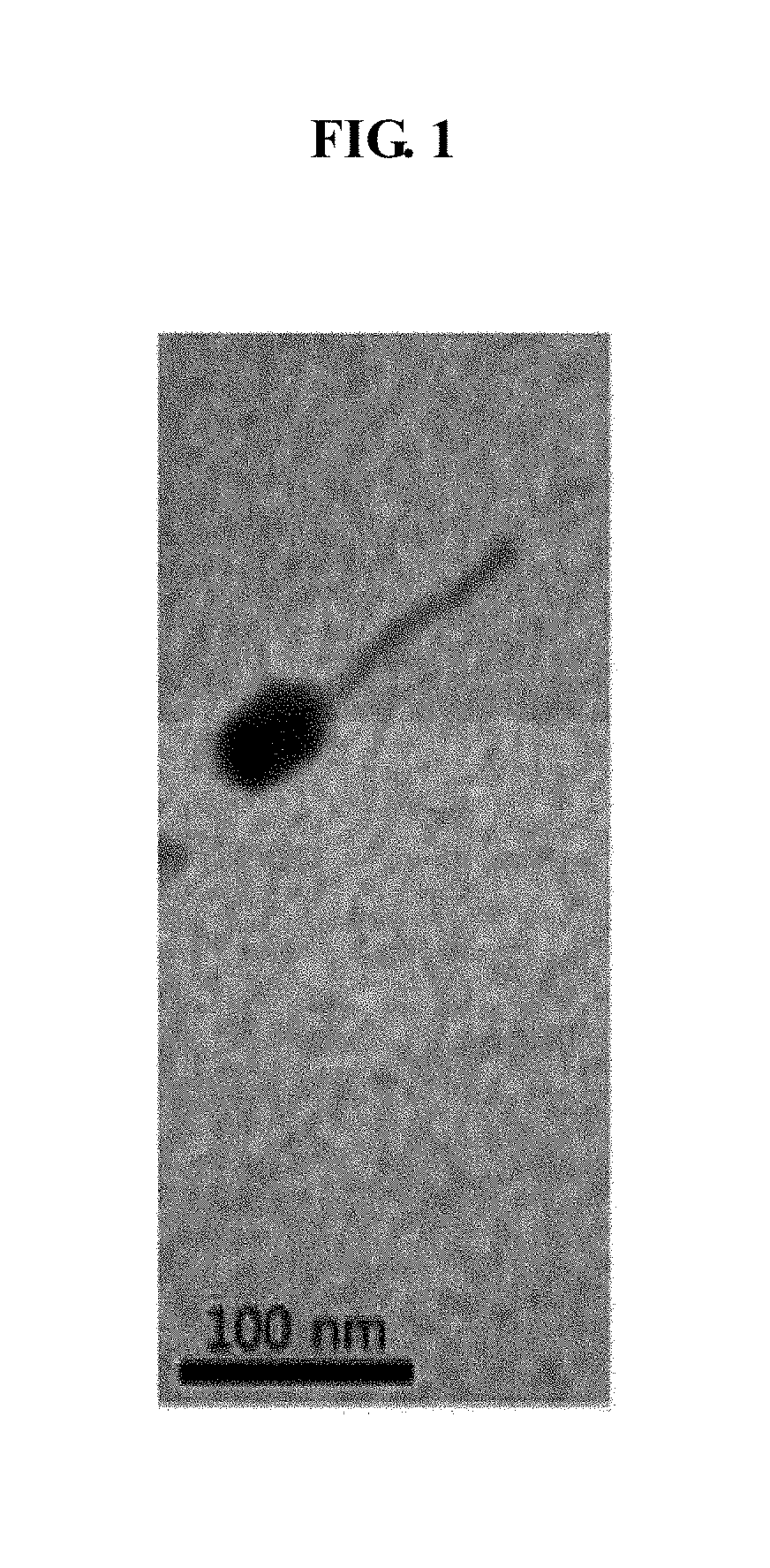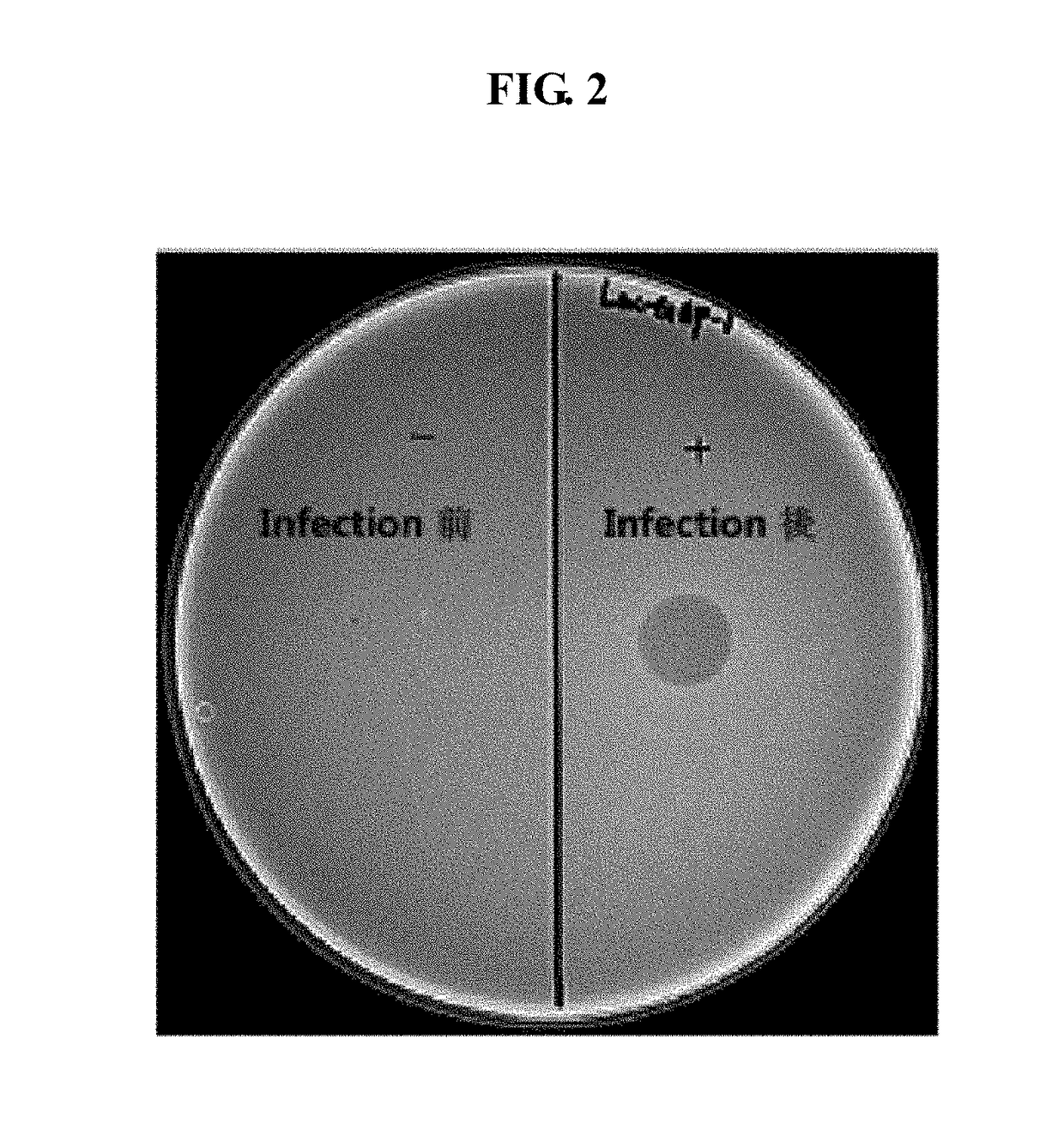Novel lactococcus garvieae bacteriophage lac-gap-1 and use thereof in suppressing proliferation of lactococcus garvieae bacteria
a technology of lactococcus garvieae and lactococcus garvieae, which is applied in the field of lactococcus garvieae bacteriophage lac-gap-1, can solve the problems of increasing the environmental pollution caused by feed around aquafarms, affecting human health, and affecting the economic value of the product, so as to achieve fewer side effects and high specificity
- Summary
- Abstract
- Description
- Claims
- Application Information
AI Technical Summary
Benefits of technology
Problems solved by technology
Method used
Image
Examples
example 1
of Bacteriophage Capable of Killing Lactococcus Garvieae
[0031]Samples were collected from the nature to screen the bacteriophage capable of killing Lactococcus garvieae. In the meantime, the Lactococcus garvieae cells used for the bacteriophage isolation herein were obtained from Korean Collection for Type Cultures, Korea Research Institute of Bioscience and Biotechnology (Accession NO: KCTC 5619).
[0032]The isolation procedure of the bacteriophage is described in detail hereinafter. The collected sample was added to the TSB (Tryptic Soy Broth) medium (pancreatic digest of casein, 17 g / L; papaic digest of soybean, 3 g / L; dextrose, 2.5 g / L; sodium chloride, 5 g / L; dipotassium phosphate, 2.5 g / L) inoculated with Lactococcus garvieae at the ratio of 1 / 1000, followed by shaking culture at 30-C for 3˜4 hours. Upon completion of the culture, centrifugation was performed at 8,000 rpm for 20 minutes and supernatant was recovered. The recovered supernatant was inoculated with Lactococcus garv...
example 2
n and Sequence Analysis of the Bacteriophage Lac-GAP-1 Genome
[0037]The genome of the bacteriophage Lac-GAP-1 was separated as follows. The genome was separated from the bacteriophage suspension obtained in Example 1. First, in order to eliminate DNA and RNA of Lactococcus garvieae included in the suspension, DNase I and RNase A were added 200 U each to 10 ml of the bacteriophage suspension, which was incubated at 37° C. for 30 minutes. 30 minutes later, to remove the DNase I and RNase A activity, 500 μl of 0.5 μM ethylenediaminetetraacetic acid (EDTA) was added thereto, which was incubated for 10 minutes. The suspension was further incubated at 65° C. for 10 minutes and then added with 100 μl of proteinase K (20 mg / ml) to break the outer wall of the bacteriophage, followed by incubation at 37° C. for 20 minutes. After that, 500 μl of 10% sodium dodecyl sulfate (SDS) solution was added thereto, followed by incubation at 65° C. for 1 hour. 10 ml of the mixture of phenol:chloroform:iso...
example 3
tion of Killing Ability of the Bacteriophage Lac-GAP-1 Against Lactococcus Garvieae
[0041]The killing ability of the isolated bacteriophage Lac-GAP-1 against Lactococcus garvieae was investigated. To do so, the formation of clear zone was observed by the spot assay by the same manner as described in Example 1. The Lactococcus garvieae used for this investigation were total 9 strains which had been isolated and identified as Lactococcus garvieae previously by the present inventors. The bacteriophage Lac-GAP-1 demonstrated the killing ability against 7 strains of Lactococcus garvieae used in this experiment. The representative result of the killing ability test is shown in FIG. 2. In the meantime, the activity of the bacteriophage Lac-GAP-1 to kill Edwardsiella tarda, Vibrio anguillarum, Vibrio ichthyoenteri, Streptococcus parauberis and Streptococcus iniae was also investigated. As a result, it is decided that the bacteriophage Lac-GAP-1 did not have the killing activity against these...
PUM
| Property | Measurement | Unit |
|---|---|---|
| pH | aaaaa | aaaaa |
| body length | aaaaa | aaaaa |
| weight % | aaaaa | aaaaa |
Abstract
Description
Claims
Application Information
 Login to View More
Login to View More - R&D
- Intellectual Property
- Life Sciences
- Materials
- Tech Scout
- Unparalleled Data Quality
- Higher Quality Content
- 60% Fewer Hallucinations
Browse by: Latest US Patents, China's latest patents, Technical Efficacy Thesaurus, Application Domain, Technology Topic, Popular Technical Reports.
© 2025 PatSnap. All rights reserved.Legal|Privacy policy|Modern Slavery Act Transparency Statement|Sitemap|About US| Contact US: help@patsnap.com



